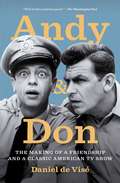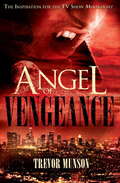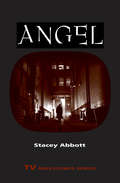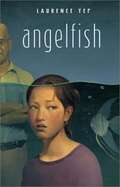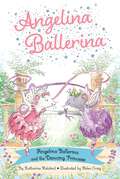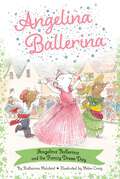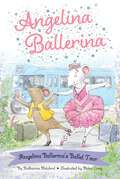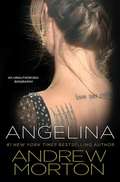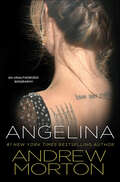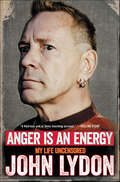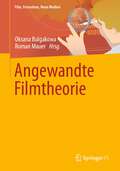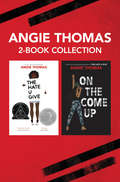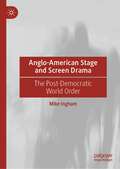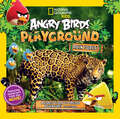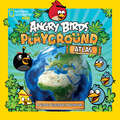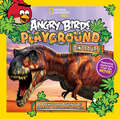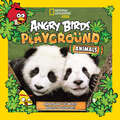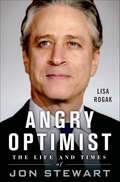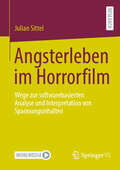- Table View
- List View
Andy Warhol: A Biography (LIVES #2)
by Wayne Koestenbaum'Properly analytical ... always entertaining' TIME OUT'Should tempt both those generally familiar with Andy Warhol and, even more, young people who have trouble imagining how popular art can challenge the status quo' L A TIMESPainter, filmmaker, photographer, philosopher, all-round celebrity, Andy Warhol is an outstanding cultural icon. He revolutionised art by bringing to it images from popular culture - such as the Campbell's soup can and Marilyn Monroe's face - while his studio, the Factory, where his free-spirited cast of 'superstars' mingled with the rich and famous, became the place of origin for every groundswell shaping American culture.In many ways he can be seen as the precursor to today's 'celebrity artists' such as Tracey Emin and Damian Hurst. But what of the man behind the white wig and dark glasses? Koestenbaum gives a fascinating, revealing and thought-provoking picture of pop art's greatest icon.
Andy and Don: The Making of a Friendship and a Classic American
by Daniel De ViséA lively and revealing biography of Andy Griffith and Don Knotts, celebrating the powerful real-life friendship behind one of America's most iconic television programs.Andy Griffith and Don Knotts met on Broadway in the 1950s. When Andy went to Hollywood to film a TV pilot about a small-town sheriff, Don called to ask if the sheriff could use a deputy. The comedic synergy between Sheriff Andy Taylor and Deputy Barney Fife ignited The Andy Griffith Show, elevating a folksy sitcom into a timeless study of human friendship, as potent off the screen as on. Andy and Don--fellow Southerners born into poverty and raised among scofflaws, bullies, and drunks--captured the hearts of Americans across the country as they rocked lazily on the front porch, meditating about the simple pleasure of a bottle of pop. But behind this sleepy, small-town charm, de Visé's exclusive reporting reveals explosions of violent temper, bouts of crippling neurosis, and all-too-human struggles with the temptations of fame. Andy and Don chronicles unspoken rivalries, passionate affairs, unrequited loves, and friendships lost and regained. Although Andy and Don ended their Mayberry partnership in 1965, they remained best friends for the next half-century, with Andy visiting Don at his death bed. Written by Don Knotts's brother-in-law and featuring extensive unpublished interviews with those closest to both men, Andy and Don is the definitive literary work on the legacy of The Andy Griffith Show and a provocative and an entertaining read about two of America's most enduring stars.
Ang Lee: Interviews (Conversations with Filmmakers Series)
by Karla Rae FullerTaiwanese born, Ang Lee (b. 1954) has produced diverse films in his award-winning body of work. Sometimes working in the West, sometimes in the East, he creates films that defy easy categorization and continue to amaze audiences worldwide. Lee has won an Academy Award two times for Best Director--the first Asian to win--for films as different as a small drama about gay cowboys in Brokeback Mountain (2005), and the 3D technical wizardry in Life of Pi (2012). He has garnered numerous accolades and awards worldwide.Lee has made a broad range of movies, including his so-called "Father Knows Best" trilogy made up of his first three films: Pushing Hands (1992), The Wedding Banquet (1993), and Eat Drink Man Woman (1994), as well as 1970s period drama The Ice Storm (1997), martial arts film Crouching Tiger, Hidden Dragon (2000), superhero blockbuster Hulk (2003), and hippie retro trip Taking Woodstock (2009).Thoughtful and passionate, Lee humbly reveals here a personal journey that brought him from Taiwan to his chosen home in the United States as he struggled and ultimately triumphed in his quest to become a superb filmmaker. Ang Lee: Interviews collects the best interviews of this reticent yet bold figure.
Angel of Vengeance
by Trevor O. MunsonThe novel that inspired the TV series Moonlight puts a twist on the classic Dracula vampire tale and blends it with Chandler hardboiled P.I. detective fiction.LA-based P.I. and vampire Mick Angel has been hired by a beautiful red-headed burlesque dancer to find her missing sister. But the apparently simple case of a teenage runaway is soon complicated by drug dealers, persistent cops, murder, and Mick's own past. Mick must learn the hard way what every vampire should know - nothing stays buried for ever, especially not the past.
Angel: Angel
by Stacey AbbottExamines the innovative approach to genre, aesthetics, narrative, and the representation of masculinity in the television series Angel.
Angelfish
by Laurence YepRobin, a young ballet dancer who is half Chinese and half white, works in a fish store for Mr. Tsow, a brusque Chinese who accuses her of being a half person and who harbors a bitter secret.
Angelina Ballerina
by Katharine HolabirdAngelina loves to dance. She dances so much she is too busy to do anything else. Then one day her parents think of a plan that will change her life.
Angelina Ballerina and the Dancing Princess (Angelina Ballerina)
by Katharine HolabirdA royally fun chapter book featuring an all-new, original Angelina Ballerina story and black-and-white illustrations throughout!Angelina Ballerina is meeting a princess her age who loves to dance! Angelina can&’t wait to feel like a princess herself. She thinks the princess will be perfect and graceful, but soon she finds out that nobody is perfect, not even princesses. But they can become perfect friends! © 2024 Helen Craig Ltd and Katharine Holabird. The Angelina Ballerina name and character and the dancing Angelina logo are trademarks of HIT Entertainment Limited, Katharine Holabird, and Helen Craig.
Angelina Ballerina and the Fancy Dress Day (Angelina Ballerina)
by Katharine HolabirdAngelina Ballerina participates in a Fancy Dress Day in this royally fun chapter book featuring black-and-white illustrations throughout!Angelina and her friends at Chipping Cheddar school can&’t wait for Fancy Dress Day. Angelina is signed up for the fancy dress race and is joining Alice in the egg and spoon race. Sammy promised Henry that they could do three-legged race together, but then Sammy forgets! Can Angelina Ballerina save the day and make sure everyone has fun dancing to the finish line? © 2024 Helen Craig Ltd and Katharine Holabird. The Angelina Ballerina name and character and the dancing Angelina logo are trademarks of HIT Entertainment Limited, Katharine Holabird, and Helen Craig.
Angelina Ballerina's Ballet Tour (Angelina Ballerina)
by Katharine HolabirdAngelina Ballerina goes on a tour like a real ballerina in this chapter book featuring an all-new, original Angelina Ballerina story and black-and-white illustrations throughout!Angelina and the other little dancers at Miss Lilly&’s Ballet School are going on a ballet tour! They are traveling to towns near Chipping Cheddar to perform. Angelina is excited but also nervous. Will she still dance her best when she isn&’t on her home stage? This charming chapter book is perfect for Angelina Ballerina fans beginning to read on their own or for reading aloud! © 2023 Helen Craig Ltd and Katharine Holabird. The Angelina Ballerina name and character and the dancing Angelina logo are trademarks of HIT Entertainment Limited, Katharine Holabird, and Helen Craig.
Angelina: An Unauthorized Biography
by Andrew Morton#1 "New York Times"-bestselling biographer Morton paints a mesmerizing portrait of the secret history and private life of gorgeous, exotic, and mysterious icon Angelina Jolie. This biography describes the actress's childhood, battle with drugs, 2 marriages, acting/modeling career, relationship with actor Brad Pitt, and the adoptions and births of her 6 children.
Angelina: An Unauthorized Biography
by Andrew MortonThe gripping true story of Angelina Jolie, from #1 New York Times bestselling biographer Andrew Morton."I like to collect knives," says Angelina Jolie, "but I also collect first edition books." At first glance, she might seem to be someone without any secrets, talking openly about her love life, sexual preferences, drug use, cutting, and tattoos--and why she kissed her brother on the lips in public. And yet mysteries remain: What was really going on in her brief, impulsive marriages to Jonny Lee Miller and Billy Bob Thornton, and what was going on in her partnership with Brad Pitt? What's behind the oft-reported feud with her father, the Oscar-winning actor Jon Voight? What drove her to become a mother of six children in six years? And—perhaps most puzzling of all—what about the other side of Angelina: How did this talented but troubled young actress, barely 35 years old, become a respected Goodwill Ambassador for the United Nations as well as the "most powerful celebrity in the world" (unseating Oprah Winfrey) on Forbes' 2009 Celebrity 100 list? The answers that Andrew Morton has uncovered are astonishing, taking us deep inside Angelina's world to show us what shaped her as a child, as an actress, and as a woman struggling to overcome personal demons that have never before been revealed. In this spellbinding biography, Andrew Morton draws upon far-reaching original interviews and research, accompanied by exclusive private photographs, to show us the true story behind both the wild excesses of Angelina's youth and her remarkable work with children and victims of poverty and disaster today.
Anger Is an Energy: My Life Uncensored
by John LydonFrom the legendary frontman of the Sex Pistols, comes the complete, unvarnished story of his life in his own words.John Lydon is an icon—one of the most recognizable and influential cultural figures of the last forty years. As Johnny Rotten, he was the lead singer of the Sex Pistols-the world’s most notorious band. The Pistols shot to fame in the mid-1970s with songs such as “Anarchy in the UK” and “God Save the Queen.” So incendiary was their impact at the time that in their native England, the Houses of Parliament questioned whether they violated the Traitors and Treasons Act, a crime that carries the death penalty to this day. The Pistols would inspire the formation of numerous other groundbreaking groups and Lydon would become the unlikely champion of a generation clamoring for change.Following on the heels of the Pistols, Lydon formed Public Image Ltd (PiL), expressing an equally urgent impulse in his character: the constant need to reinvent himself, to keep moving. From their beginnings in 1978 PiL set the groundbreaking template for a band that continues to challenge and thrive to this day, while also recording one of the eighties most powerful anthems, “Rise.” Lydon also found time for making innovative dance records with the likes of Afrika Bambaataa and Leftfield. By the nineties he’d broadened his reach into other media while always maintaining his trademark invective and wit, most memorably hosting Rotten TV on VH1.John Lydon remains a captivating and dynamic figure to this day—both as a musician, and, thanks to his outspoken, controversial, and from-the-hip opinions, as a cultural commentator. In Anger is an Energy, he looks back on a life full of incident, from his beginnings as a sickly child of immigrant Irish parents growing up in post-war London to his present status as a vibrant, alternative hero.The book includes 70 black-and-white and color photos, many which are rare or never-before-seen.
Anger is an Energy: My Life Uncensored
by John LydonJohn Lydon has secured prime position as one of the most recognizable icons in the annals of music history. As Johnny Rotten, he was the lead singer of the Sex Pistols - the world's most notorious band, who shot to fame in the mid-1970s with singles such as 'Anarchy in the UK' and 'God Save the Queen'. So revolutionary was his influence, he was even discussed in the Houses of Parliament, under the Traitors and Treasons Act, which still carries the death penalty. Via his music and invective he spearheaded a generation of young people across the world who were clamouring for change - and found it in the style and attitude of this most unlikely figurehead. With his next band, Public Image Ltd (PiL) Lydon expressed an equally urgent impulse in his make-up - the constant need to reinvent himself, to keep moving. From their beginnings in 1978 he set the groundbreaking template for a band that continues to challenge and thrive in the 2010s. He also found time for making innovative new dance records with the likes of Afrika Baambaata and Leftfield. Following the release of a solo record in 1997, John took a sabbatical from his music career into other media, most memorably his own Rotten TV show for VH1 and as the most outrageous contestant ever on I'm a Celebrity.... Get Me Out of Here! He then fronted the Megabugs series and one-off nature documentaries and even turned his hand to a series of much loved TV advertisements for Country Life butter. Lydon has remained a compelling and dynamic figure - both as a musician, and, thanks to his outspoken, controversial, yet always heartfelt and honest statements, as a cultural commentator.The book a fresh and mature look back on a life full of incident from his beginnings as a sickly child of immigrant Irish parents who grew up in post-war London, to his present status as a vibrant, alternative national hero.
Anger is an Energy: My Life Uncensored
by John LydonJohn Lydon has secured prime position as one of the most recognizable icons in the annals of music history. As Johnny Rotten, he was the lead singer of the Sex Pistols - the world's most notorious band, who shot to fame in the mid-1970s with singles such as 'Anarchy in the UK' and 'God Save the Queen'. So revolutionary was his influence, he was even discussed in the Houses of Parliament, under the Traitors and Treasons Act, which still carries the death penalty. Via his music and invective he spearheaded a generation of young people across the world who were clamouring for change - and found it in the style and attitude of this most unlikely figurehead.With his next band, Public Image Ltd (PiL) Lydon expressed an equally urgent impulse in his make-up - the constant need to reinvent himself, to keep moving. From their beginnings in 1978 he set the groundbreaking template for a band that continues to challenge and thrive in the 2010s. He also found time for making innovative new dance records with the likes of Afrika Baambaata and Leftfield. Following the release of a solo record in 1997, John took a sabbatical from his music career into other media, most memorably his own Rotten TV show for VH1 and as the most outrageous contestant ever on I'm a Celebrity.... Get Me Out of Here!He then fronted the Megabugsseries and one-off nature documentaries and even turned his hand to a series of much loved TV advertisements for Country Life butter.Lydon has remained a compelling and dynamic figure - both as a musician, and, thanks to his outspoken, controversial, yet always heartfelt and honest statements, as a cultural commentator.The book a fresh and mature look back on a life full of incident from his beginnings as a sickly child of immigrant Irish parents who grew up in post-war London, to his present status as a vibrant, alternative national hero.
Anger is an Energy: My Life Uncensored
by John LydonJohn Lydon has secured prime position as one of the most recognizable icons in the annals of music history. As Johnny Rotten, he was the lead singer of the Sex Pistols - the world's most notorious band, who shot to fame in the mid-1970s with singles such as 'Anarchy in the UK' and 'God Save the Queen'. So revolutionary was his influence, he was even discussed in the Houses of Parliament, under the Traitors and Treasons Act, which still carries the death penalty. Via his music and invective he spearheaded a generation of young people across the world who were clamouring for change - and found it in the style and attitude of this most unlikely figurehead.With his next band, Public Image Ltd (PiL) Lydon expressed an equally urgent impulse in his make-up - the constant need to reinvent himself, to keep moving. From their beginnings in 1978 he set the groundbreaking template for a band that continues to challenge and thrive in the 2010s. He also found time for making innovative new dance records with the likes of Afrika Baambaata and Leftfield. Following the release of a solo record in 1997, John took a sabbatical from his music career into other media, most memorably his own Rotten TV show for VH1 and as the most outrageous contestant ever on I'm a Celebrity.... Get Me Out of Here!He then fronted the Megabugsseries and one-off nature documentaries and even turned his hand to a series of much loved TV advertisements for Country Life butter.Lydon has remained a compelling and dynamic figure - both as a musician, and, thanks to his outspoken, controversial, yet always heartfelt and honest statements, as a cultural commentator.The book a fresh and mature look back on a life full of incident from his beginnings as a sickly child of immigrant Irish parents who grew up in post-war London, to his present status as a vibrant, alternative national hero.
Angewandte Filmtheorie (Film, Fernsehen, Neue Medien)
by Roman Mauer Oksana BulgakowaWelche Filmtheorie ist hilfreich, um eine Erkenntnisfrage zu klären? Wie wirkt sich die theoretische Perspektive auf die Filmanalyse aus? Diese Fragen bestimmen grundlegend jede Untersuchung. Um den besonderen Fokus einer Theorie offenzulegen, stellt dieses Lehrbuch einen Spielfilm ins Zentrum: Blow Up (GB, I, USA 1966) von Michelangelo Antonioni. Blow Up wird wechselweise beleuchtet aus dem Blickwinkel der Narratologie, Bildtheorie und Musiktheorie, der Stil- und Genretheorie, des Neoformalismus und der quantitativen Filmanalyse, der Psychoanalyse und Gender Studies, der Realismustheorie und des Poststrukturalismus, der Intermedialitätstheorie und der Medienkulturtheorie. Welche Konturen des Films treten im Schlaglicht einer Theorie hervor, welche werden durch sie verborgen? Wie können sich zwei Modelle ergänzen? Wo schließen sie einander aus? Die Beiträge führen in die zentralen Positionen und Kategorien jeder Theorie ein und wenden die Modelle unmittelbar auf den Film an. Um die Besonderheiten der Perspektiven herauszustellen, reflektieren die Autor*innen jeweils abschließend die Analogien, Differenzen und Synergien sowie die Vor- und Nachteile komplementärer Theorien.
Angie Thomas 2-Book Collection: The Hate U Give and On the Come Up
by Angie ThomasDiscover the critically acclaimed, #1 New York Times bestselling The Hate U Give and the highly anticipated On the Come Up from Angie Thomas in this two-book collection.FIND YOUR VOICE. MAKE SOME NOISE.The Hate U GiveWilliam C. Morris Award Winner ∙ National Book Award Longlist ∙ Michael L. Printz Honor Book ∙ Coretta Scott King Author Honor Book"Absolutely riveting!" —Jason Reynolds"Stunning." —John Green"This story is necessary. This story is important."—Kirkus (starred review)"Heartbreakingly topical."—Publishers Weekly (starred review)Sixteen-year-old Starr Carter moves between two worlds: the poor neighborhood where she lives and the fancy suburban prep school she attends. The uneasy balance between these worlds is shattered when Starr witnesses the fatal shooting of her childhood best friend Khalil at the hands of a police officer. On the Come Up Sixteen-year-old Bri wants to be one of the greatest rappers of all time. Or at least win her first battle. As the daughter of an underground hip hop legend who died right before he hit big, Bri’s got massive shoes to fill. But it’s hard to get your come up when you’re labeled a hoodlum at school, and your fridge at home is empty after your mom loses her job. So Bri pours her anger and frustration into her first song, which goes viral…for all the wrong reasons.
Anglo-American Stage and Screen Drama: The Post-Democratic World Order
by Mike InghamAnglo-American Stage and Screen Drama analyses and discusses the contemporary role of stage and screen drama as a critical forum for progressive thinking in an increasingly polarised geopolitical world. The book addresses the cultural politics of socially engaged 21st century stage plays and films, and makes the case for drama as a sociopolitical forum, in which the complex and contentious issues that confront society can be explored and debated. It conceives of Anglophone political drama as a significant intervention in today’s culture wars, representing the latter as a convenient distraction from the ongoing depredations of neoliberalism. In the main part of the book selected case-study plays and films from each of the first two decades illustrate drama’s capacity to influence critical debate on social justice issues. All of the case-study texts under discussion express a powerful aesthetics of resistance to right-wing ideology, and promote inclusive and enlightened values. This broader orientation underlines drama’s role as a channel for critical agency in today’s putative post-socialist, post-democratic climate.
Angry Birds Playground: A Forest Floor to Treetop Adventure
by Jill EsbaumFollow along with your favorite Angry Birds characters as they go on an incredible adventure through the rain forest. Kids will be hooked on a wacky mission to learn all about the rain forest so they can protect it from those bad piggies. Readers analyze and explore the most diverse ecosystem in the world as they build basic skills. Packed with learning exercises and fun activities, Angry Birds Playground: Rain Forest will transform kids into adventurers and leave them wanting more. It's a fun-tastic way to learn about a habitat in danger and the tens of thousands of creatures that call it home!
Angry Birds Playground: A Global Geography Adventure
by Elizabeth CarneyFollow along with your favorite Angry Birds characters as they fly around the world discovering continents, countries, and cultures. Kids will be hooked on a wacky search for the Angry Birds' eggs as they seek out clues that lead them to amazing discoveries. Readers analyze and observe the world from a global perspective as they build basic skills. Packed with learning exercises and fun activities, the Angry Birds Playground: Atlas will transform kids into explorers and leave them wanting more adventure.
Angry Birds Playground: A Prehistoric Adventure!
by Jill EsbaumIt's an extraordinary day on Piggy Island because the Angry Birds haven't lost their eggs, they've found something amazing: a bone! Not a plain old bone—a huge and very old bone. What kind of giant creature could this bone have come from? That's a question for Mighty Eagle—the wisest bird they know. Join the Angry Birds on their imaginary trip through time to discover the most awesome animals ever to roam this planet: the dinosaurs! But why do the Angry Birds feel such a special bond with the ancient beasts? Maybe Mighty Eagle knows the answer!
Angry Birds Playground: An Around-the-World Habitat Adventure (Angry Birds)
by Jill EsbaumFly with your favorite Angry Birds characters through the rainforest, over the desert, and into the oceans to help them on their zany search to find their eggs. Kids will be hooked on this wacky mystery as they analyze and observe the diverse habitats of the world while building basic skills through fun and fascinating activities.
Angry Optimist: The Life and Times of Jon Stewart
by Lisa RogakA New York Times Bestseller Since his arrival at The Daily Show in 1999, Jon Stewart has become one of the major players in comedy as well as one of the most significant liberal voices in the media. In Angry Optimist, biographer Lisa Rogak charts his unlikely rise to stardom. She follows him from his early days growing up in New Jersey, through his years as a struggling standup comic in New York, and on to the short-lived but acclaimed The Jon Stewart Show. And she charts his humbling string of near-misses—passed over as a replacement for shows hosted by Conan O'Brien, Tom Snyder, and even the fictional Larry Sanders—before landing on a half-hour comedy show that at the time was still finding its footing amidst roiling internal drama.Once there, Stewart transformed The Daily Show into one of the most influential news programs on television today. Drawing on interviews with current and former colleagues, Rogak reveals how things work—and sometimes don't work—behind the scenes at The Daily Show, led by Jon Stewart, a comedian who has come to wield incredible power in American politics.
Angsterleben im Horrorfilm: Wege zur softwarebasierten Analyse und Interpretation von Spannungsinhalten
by Julian SittelDie multimodale Studie zum Spannungs- respektive Angsterleben im Horrorfilm ist Teil eines von der Deutschen Forschungsgemeinschaft geförderten Kooperationsprojektes zwischen Filmwissenschaft (Universität Mainz) und Informatik (Universität Hannover), das dem Ausbau der digitalen Infrastruktur dient. Dies erfolgt über die Entwicklung einer Softwareplattform, die es Forscherinnen und Forschern ermöglicht, automatisiert und manuell Daten aus audiovisuellem Material zu gewinnen. In diesem ersten exemplarischen Forschungsprojekt wurden zur Untersuchung eines 20 Filme umfassenden Slasher-Film-Korpus, einem Sub Genre des Horrorfilms, einerseits das System zur manuellen Annotation sowie andererseits die grundlegenden algorithmischen Verfahren zur Erhebung von Einstellungslängen, Kameragrößen, den Helligkeits- und Laustärkewerten und zur Erkennung von Gesichtern in das System implementiert. Kann das Auslösen einer Angstreaktion als funktionaler Kern beim Spannungserleben eines Horrorfilms betrachtet werden, ermittelt die Arbeit, unter der Verwendung explorativ-statistischer Verfahren, Regelmäßigkeiten im Aufbau von diesbezüglich relevanten Inhalten. Die Untersuchung zeigt letztlich, dass Slasher-Filme durch ihre Inszenierung Eigenschaften von Gefahrensituationen simulieren, auf die das Publikum von Natur aus sensibilisiert ist.

